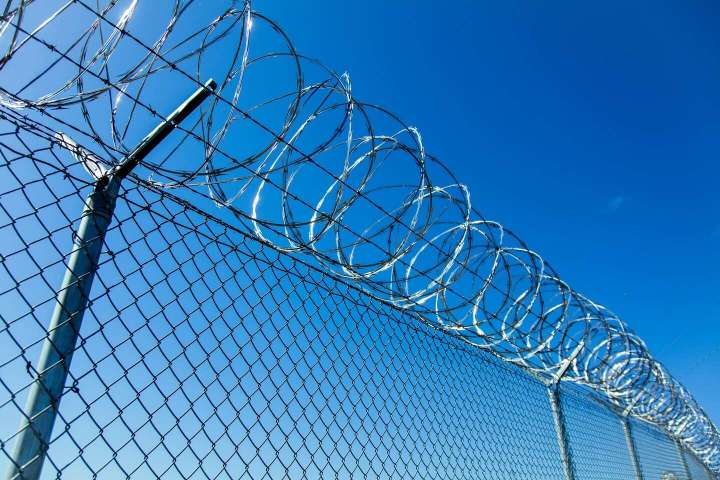Julius Oatts is a pediatric ophthalmologist and assistant professor at the University of California at San Francisco.
Why are prisoners paid a pittance to make glasses I prescribe for poor kids?

The reason for the delay? Coronavirus-related shutdowns of an optical shop in a nearby prison, staffed by incarcerated people, who in California are generally paid between 8 cents and 37 cents per hour. I grappled with conflicted feelings: Alarm over the delay in obtaining eyeglasses for my patient and concern about the welfare of the people making them — because of substandard prison health care and the scandalously low wages.
This child, like many of my patients, was insured by Medi-Cal, California’s Medicaid health insurance program serving low-income children, families and seniors, typically those making below 138 percent of the federal poverty level (currently $38,295 annual income for a family of four). In the current fiscal year, the California Department of Health Care Services, which oversees Medi-Cal, agreed to pay up to $37.9 million for optical services for adults and children run by the California Prison Industry Authority, a semiautonomous prison labor agency under the California Department of Corrections and Rehabilitation. The arrangement dates to the 1980s.
The California penal code requires that the state purchase products, such as eyeglasses, made by imprisoned people overseen by the prison industry authority. Colleagues and I recently published an article in the American Journal of Public Health examining the relationship between taxpayer-funded health care and prison labor in California. We found, through a public-records request and confirmed with the California Prison Industry Authority, that the state’s Medicaid contracts account for up to 74 percent of the authority’s approximately $13 million annual revenue from optical services.
Thus do taxpayers and a state health-care program for poor children help subsidize an agency overseeing prison labor. The practice is not unique to California; other states using it include New York and Pennsylvania.
Prison labor is often uncompensated or minimally compensated. The 13th Amendment allows the government to compel incarcerated people to work without compensation — which many critics today view as a modern-day extension of slavery. I’m among them.
I recognize that prison labor, in particular the manufacturing of eyeglasses, teaches job skills that can theoretically help with reintegration after leaving prison. What I object to is the minuscule compensation paid to the imprisoned workers — typically a political sop to companies and labor unions worried about competition.
In recent years, Colorado, Nebraska and Utah have banned “involuntary servitude,” opening the way to improving prison pay and working conditions. Paying prison workers the minimum wage seems like it would be the minimally acceptable policy, but an effort in June by California legislators on that front failed amid concerns about the estimated $1.6 billion cost. That is not a small sum, but it represents less than 1 percent of California’s $110.4 billion budget for 2022-2023.
The state Senate attempted last spring to target the prison-made eyewear arrangement, unhappy over reports of long waits by Medi-Cal recipients for eyeglasses. (The state attributed the delays, like the one I experienced, to pandemic-related illness and lockdowns, but an industry association says the delays persist.) A bill proposed to allow Medi-Cal to pay for eyeglasses obtained from private optical labs, but the legislation was derailed in committee. In any case, some legislators were prepared to bless paying what a state analysis found would be a 141 percent premium to private-sector sources above the rate for prison-made eyewear.
Earlier this year, California “employed” 295 incarcerated people in optical programs at three prisons, with that number set to rise to 420 over the summer as another operation fully opened. Fairly compensating them — and even expanding their number to meet demand or speed delivery times, if needed — seems eminently preferable to paying a bonus to private labs.
If incarcerated people were being paid the minimum wage for producing eyeglasses, I’d still feel conflicted, but would be relieved of the sense that simply through prescribing sight-preserving glasses to my state-insured patients, I am an involuntary participant in an exploitive system.
As for that infant who had cataract surgery and whose urgently needed eyeglasses were delayed, I ultimately was able to obtain them in a more timely way through a philanthropic organization that allows families to bypass the prison-based optical labs contracted by Medi-Cal. Such workarounds can help children avoid preventable vision loss, thankfully, but they’re not a long-term solution. Eventually, the current arrangement’s fundamental inequities will need to be addressed.
In medical school, I took an oath to “do no harm.” Since then, I’ve had the chance to reflect on the meaning of harm and when it can occur far from the doctor’s office doors.






